Visual Resources
The Theatre of Epidaurus
By the THEATRON consortium
The theatre at Epidaurus, one of the finest surviving examples of classical Greek theatre architecture. This immense structure was built in stone and carved out of the living hillside at Epidaurus during the latter part of the fourth century BC. As a result of this significant fact, the theatre’s 15,000 spectators had not only a splendid view of the dramatic action presented within the confines of the theatre’s structure, but also of the physical environment in which the theatre was set.
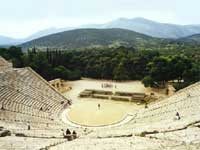 The Theatre today
The Theatre today
Scholars are not absolutely sure what the structure of the skene looked like, because it does not survive; but it is generally considered that the skene at Epidauros possibly consisted of a closed wall containing three doorways. It was also possibly roofed so as to allow performers to act on top as well as in front of it.
Three doorways would certainly have allowed actors ample entrance and egress to the stage from their dressing-room facilities – but it would also have facilitated in the production of an ekkukleyma (a sort of wheeled trolley on which important visual spectacles were produced for the audience to see from within the stage building at special moments of the play).
Next to the front of the skene (and its proposed doors), a colonnaded area may be seen in front. This is the paraskenion. It has a structure above that is supported by columns so as to allow actors and chorus members the possibility of entering the playing space unencumbered from the eisodos.
(click on the images to expand)
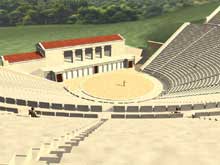 |
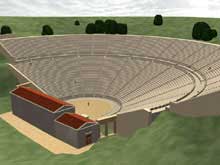 |
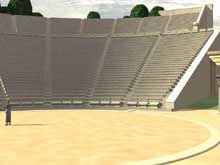 |
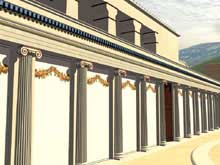 |
| View from the upper cavea | View of the theatre from behind the skene | View of the theatron | Close up view of the skene |
Images copyright the University of Warwick. Created by the THEATRON Consortium.
For more information on THEATRON please visit www.theatron.org
